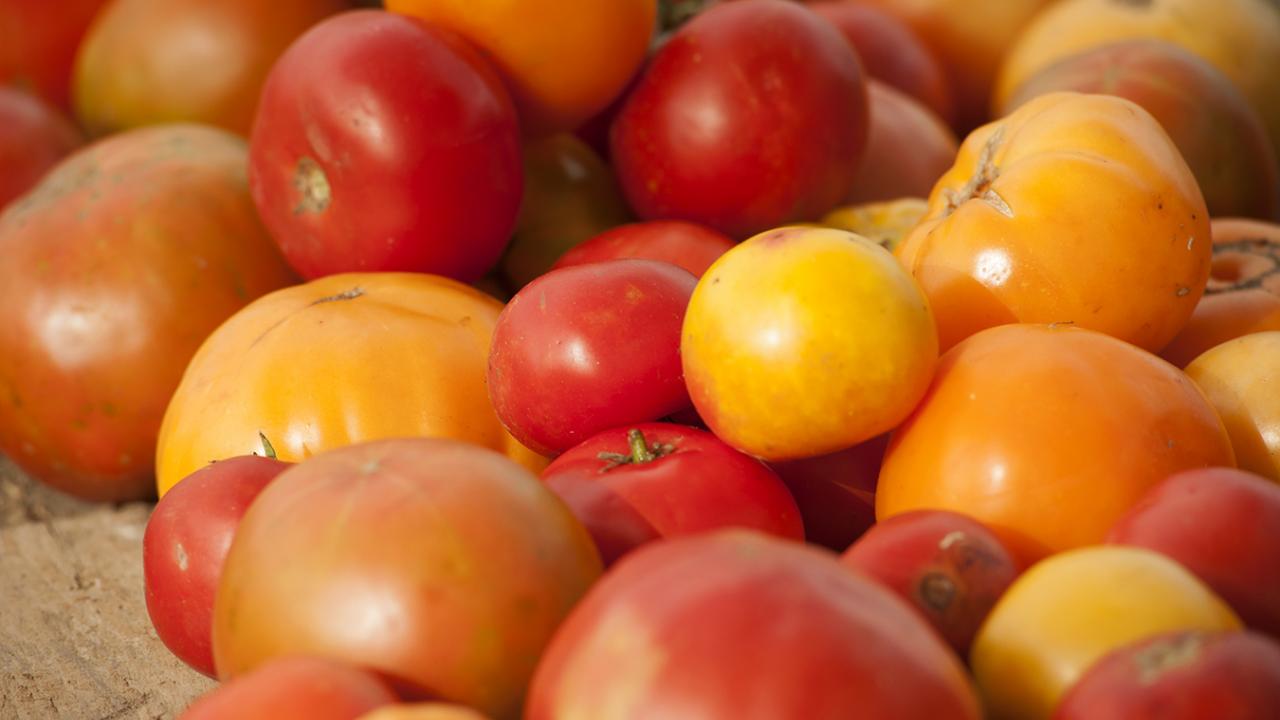
STAIR Grant Funds Plant Biologists’ Efforts to Create Cheaper CRISPR Tech
Quick Summary
- The UC Davis STAIR Grant program helps researchers translate innovative ideas into early proof-of-concept technologies
- UC Davis plant biologists received $50,000 from TechAccel and the College of Biological Sciences to launch the project
- They hope develop a new method for rapid and efficient genome editing in tomatoes
When Anne Britt joined UC Davis as a research scientist in 1990, she traded in studying the bacterium E. coli for the plant Arabidopsis thaliana. The trade was a gamble. Britt’s research focused on DNA repair, and at the time, plants weren’t a popular model organism for the molecular biology field.
“When most people think about DNA repair in humans, they’re thinking about cancer and aging,” said Britt. “Plants don’t really get cancer because the cells can’t metastasize. They’re trapped inside a cell wall, so the worst they can do is make a tumor.”
While colleagues questioned the value of Britt’s switch to plants, timing was on her side. The depletion of the ozone layer was a growing concern across the globe. And with that concern came research funding. Suddenly, people wanted to know not only how ultraviolet radiation damaged the DNA of humans but how it damaged the DNA of plants.
“All of a sudden, people thought, ‘how do plants repair their DNA?’” said Britt, now a professor of plant biology. “At the same time, the National Science Foundation was suddenly pushing Arabidopsis as a model for finally getting into plant molecular biology.”
Suddenly, Britt was studying a hot topic in a hot model organism. Timing was everything.
With her expertise in plant molecular biology, Britt has set her sights on entrepreneurship and innovation. Assisted by a UC Davis’ Science Translations and Innovative Research (STAIR) Grant program, Britt will work with Professor Neelima Sinha, Department of Plant Biology, to develop a new method for rapid and efficient genome editing in tomatoes. According to the researchers, such tech could make crop improvement cheaper, faster and easier.
A scientist’s many hats

Being a scientist means much more than simply spending hours at the workbench. There’s grant writing, teaching, science communication and, for those interested in business, entrepreneurship. The UC Davis STAIR Grant program helps researchers translate innovative ideas into early proof-of-concept technologies, helping bridge the gap between research and business. TechAccel and the College of Biological Sciences provided Britt and Sinha with $50,000 for this new project.
“With crops, the focus has always been on breeding and not enough focus on how to do efficient transformation,” said Sinha.
“This is a technology that allows you to very rapidly, very simply and very cheaply create CRISPR edited plants,” added Britt, noting the new tech bypasses many monetary, time and experience constraints. “We’re not really trying to put new genes in. We’re trying to correct problems that already exist in the system and edit native genes.”
According to Britt and Sinha, current CRISPR technologies are effective at the cellular level, but regenerating an entire plant from a single cell is a daunting task. Some plants, like the tobacco plant, are better at regenerating than others.
“Tobacco is one of the first plants where people showed it could be regenerated,” said Sinha, noting that tomato and tobacco are in the same plant family. “But we don’t want to transform tobacco. We want to transform grapes and soybean and peppers.”

Starting with the tomato
As a proof-of-concept, Britt and Sinha will develop a technology for use in tomato plants. But once that’s achieved, they hope to tailor the technology to other crops that can’t be regenerated using tissue culture.
Already, Britt and Sinha have experienced part of the STAIR Grant program’s entrepreneurship component. In late June, Britt attended a three-day entrepreneurship academy meant to help researchers identify markets for their technology and help them create pitches for industry.
“A scientist is inclined to get into the real nitty-gritty of a project immediately,” said Britt. “A lot of them never think about the market.”
Britt and Sinha both think there are problems facing the market and consumers that could be fixed with their technology. Ideally, it could potentially be used to improve crop flavor and nutritional value while eliminating potential toxins and allergens.
“Those are the kinds of things one would want to do, but you know there’s a big gap between the start and the end goal,” said Sinha.
